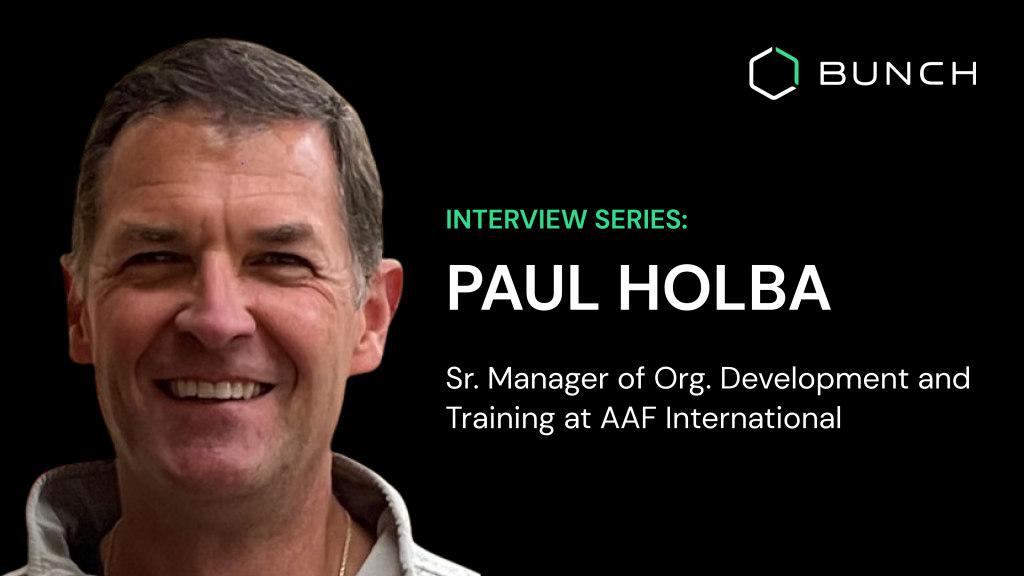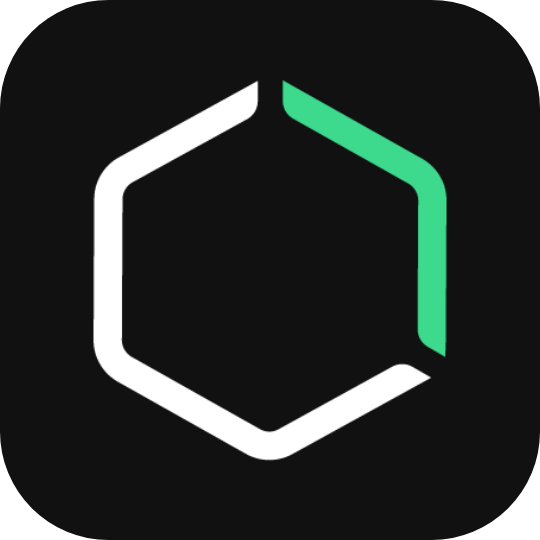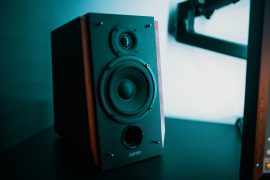
AI tools provide opportunities to create scenarios for practice, which might not be possible without another human.
Paul Holba
In this edition of our new Leadership Development Interview Series, we sat down with Paul Holba to learn about how his team has introduced new training and development initiatives at American Air Filters, a larger company with a rich 100-year history. He also shares his view on the promise and opportunity of AI in a company like his, which was especially insightful!
Paul, can you tell us a bit about yourself?
I run training and development for American Air Filters, a division of Daikin in North America. AAF is 101 years old, but training is only six years old. We face a steep climb in getting our partnership up to speed and growing within manufacturing operations. I started as the training manager for all our plants and have been involved in various training initiatives, including foundational leadership training and train-the-trainer programs. Currently, I manage a team of three supporting about 3000 employees.
What does leadership mean to you, and which skills do people need to succeed as a leader?
The biggest skill is the ability to stop and listen to what the employee is saying or understanding the true message. There’s a human component to the job, and leaders must create relationships for trust and success. Not everyone is cut out to be a leader or manager, and that’s okay. Special talents and gifts are needed to be an effective leader. We need to provide an environment for trial and error in leadership roles.
What does leadership development look like at your company? Which tools and programs do you have in place, and how do you currently select new leadership talent to develop?
We’ve been using the DISC personality tool and recently shifted to Core Strengths. This tool talks about conflict and how we react to others in conflict, which is crucial for leaders. We focus on understanding core values and how that impacts reactions in conflict situations. Also, we aim to understand each other better in the context of conflict.
What was your biggest success story with implementing or improving a leadership development initiative? We’re also interested in hearing stories about what didn’t work!
Introducing tools like Core Strengths has been successful. I focus on making classes interactive and fun, with activities and role plays to engage participants. Understanding different learning styles is also crucial. A significant win is asking people about their future aspirations and showing care beyond just getting results from them.
What are some current challenges with leadership development overall in your company? What are hard parts about developing leaders?
A big challenge is the generational differences and addressing the topic bravely. It’s about understanding and adapting to the fact that expectations and mindsets vary with each generation.
Have you considered using AI tools in developing the future generation of leaders? Why/why not?
Yes, I’ve been looking at AI for coaching. AI tools provide opportunities to create scenarios for practice, which might not be possible without another human. However, flexibility is key, and these tools should accommodate company policies and individual personalities for effective coaching.
What applications of AI seem most promising to you from a leadership development standpoint? Where does AI fall flat?
AI could be used for coaching and creating non-threatening simulation environments. It offers the potential to practice interactions before engaging in real situations. However, the lack of emotion in AI is a significant aspect where it might fall flat, as human interactions often involve emotional bonds and responses.
I started my career in hospitality, sales, field marketing, and customer success, but did a bit of a career pivot about 10 years ago. I had been working at a startup leading customer success and customer education, but I realized that the “through line” in my entire career was that I loved creating exceptional experiences for people, – so I took a leap into People Operations when I started as employee number 13 at a tech startup called Custora. I did everything from office management all the way up to organizational design.I led them through four years of growth from 13 to about 120 people. Very shortly after I left that company was acquired, and that was my first taste of what it was to scale up a company. I have done it over again for two more companies now.
At this point I’m a three-time founding people operations leader. Most recently I joined 86 Repairs (a restaurant technology startup) at about 40 people and doubled headcount in 6 months. I’ve impacted all functions in people operations, everything from talent acquisition and employer branding to communications strategy and roadmapping through performance management and everything in between.
What does leadership mean to you, and which skills do people need to succeed as a leader?
I think that a lot of times folks think that being a leader is a managerial role . But I like to take a more holistic approach and really believe that folks who are in what I call maker or individual contributor roles can also be leaders in their own right.
A lot of times, especially in growing companies, the real leaders in the company don’t have any direct reports at first; rather, they’re building a functional area from scratch to create a whole new category. They’re creating the processes that become the foundations the company can scale on. In that sense, leadership is being a thought partner, having a really holistic view of the business and considering first what the business needs before what they personally need.
From a trait or characteristic perspective, I think that means being able to see the forest through the trees, being able to think strategically, playing that chess game in your head. So being very proactive and thinking 10 steps forward. If I do this today in 2023, what will that mean in 6 or 12 months? And how am I setting myself or my functional area up for success? I think it means being empathetic and understanding how your individual functional area impacts the rest of the company. So again, thinking through that chess game of, if I do this, what happens to the marketing department? What happens to the product and engineering team? And being able to have that empathy to collaborate effectively with stakeholders.
What does leadership development look like at your company? Which tools and programs do you have in place, and how do you currently select new leadership talent to develop?
We’ve been successful at building a new leader boot camp that is tiered to the experience level of the new manager entering the program. We have very structured jobs, scopes, roles and responsibilities, and career frameworks so if someone’s growing from a very senior individual contributor, on to the manager path they are given the opportunity to join a program that the learning and development person on my team, Katie, helped craft.
It covers the skills that you need to know now that you’re a new leader.
What was your biggest success story with implementing or improving a leadership development initiative? We’re also interested in hearing stories about what didn’t work!
When I started at 86, there wasn’t a lot of structure, which is typical of a company, at that stage. They didn’t yet have career frameworks, job levels, a defined process for leveling up, performance management, compensation banding, etc. It was more defined on some teams and ad-hoc on others which made it inequitable. When I started in April of 2022, I did some investigating through 1-1 interviews and data reviews of past engagement surveys to identify the challenges that were most pressing. We started building a custom performance management program and launched a robust process along with lots of learning and development materials in less than 6-months. That timeline was fast but it set the company up to grow in the way it needed to accommodate the revenue.
What are some current challenges with leadership development overall in your company? What are hard parts about developing leaders?
In growing companies, roles change frequently so change management becomes more critical. Whether going through scaling up or scaling back, thought needs to go into how that impacts individuals in their roles and communication needs to be on point – clear and candid.
Have you considered using AI tools in developing the future generation of leaders? Why/why not?
Personally, I have used ChatGPT for building processes, procedures, even communications. We use Notion, and Notion has an AI plugin, which has been really useful if I’m having a hard day and I need to write something, like announcing a promotion. That has really helped. I don’t have the budget to invest in tools, but I know that there are really good tools out there that if the company was scaling and growing in a rapid way that there are things I would invest in, whether it’s from a candidate perspective, automating some candidate messages.
What applications of AI seem most promising to you from a leadership development standpoint? Where does AI fall flat?
I think for some things you could definitely get by with AI, like if it’s more practical or tactical, writing communications, policies, or answering questions that have binary answers. I don’t think you can automate HRPB coaching work into an AI bot, because there is so much nuance in you’re dealing with people, leaders especially are dealing with their own humans.
To learn from more experts on how to grow leaders at your company, check out our full list of interviews here.
If you’re looking to grow future leaders at your own company, get in touch to see how Bunch can enable you to give every person in your company a personalized, continuous development program in just 2 minutes a day.





